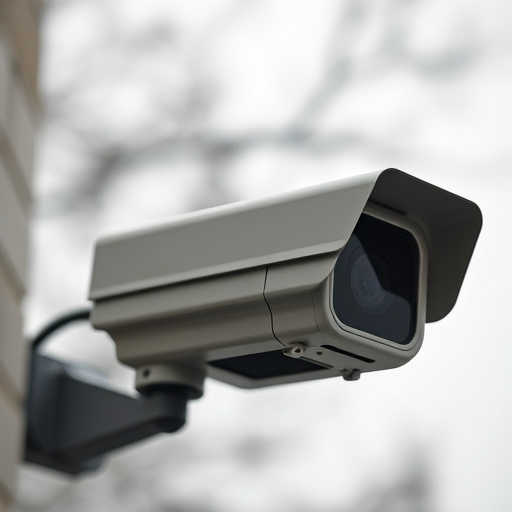Detecting spy cameras with remote viewing capabilities leverages light reflection principles. Experts analyze changes in light intensity and patterns caused by camera lenses reflecting sources like lamps or sunlight. Advanced tools like high-powered lasers and image processing software identify unusual reflections, pixelations, or distortions to pinpoint hidden cameras' locations. Combining this method with thermal imaging improves accuracy by detecting heat signatures different from the surroundings, offering crucial countermeasures against such surveillance technologies.
Uncover hidden threats with our guide on spy camera detection using light reflection. In an era where privacy is paramount, understanding how to identify covert surveillance devices like spy cameras is crucial. This article breaks down the science behind the technique, offering a comprehensive step-by-step guide for successful remote viewing. We’ll explore advanced tips and tools, empowering you with the knowledge to spot even the most sophisticated spy cameras. Master the art of light reflection and take control of your digital privacy with our expert insights on spy camera detection using remote viewing.
- Understanding Spy Camera Detection: The Basics of Light Reflection
- How the Remote Viewing Technique Works: A Step-by-Step Guide
- Advanced Tips and Tools for Effective Spy Camera Detection Using Light Reflection
Understanding Spy Camera Detection: The Basics of Light Reflection
Understanding Spy Camera Detection: The Basics of Light Reflection
Spy camera detection, particularly for those featuring remote viewing capabilities, relies on a fundamental principle: light reflection. These devices, often discreetly placed to monitor activities, operate by capturing and transmitting visual data via infrared or other light wavelengths. When light from a source, such as a lamp or even natural sunlight, encounters the lens of a spy camera, it reflects off its surface. This reflection can be detected by specialized equipment, which analyzes changes in light intensity or patterns to identify potential hidden cameras.
The technique leverages the fact that different materials reflect light differently. By studying these reflections, experts can pinpoint the location of a spy camera within a room or space. In environments where remote viewing is a concern, understanding how light interacts with various surfaces becomes crucial. This knowledge enables individuals to take proactive measures, such as using reflective materials strategically or employing advanced detection tools, to foil the efforts of covert surveillance devices like spy cameras with remote viewing capabilities.
How the Remote Viewing Technique Works: A Step-by-Step Guide
The Remote Viewing Technique for spy camera detection leverages the power of light reflection and human perception to uncover hidden cameras. This method involves a step-by-step process where trained individuals, often referred to as remote viewers, utilize their senses to detect electronic devices emitting electromagnetic signals.
1. Preparation: The viewer starts by focusing on a specific area, such as a room or an object, and clearing their mind of any preconceived notions. They may use visualization techniques to enhance their sensitivity to subtle changes in light and energy fields.
2. Visual Scanning: Utilizing their enhanced perception, the viewer begins a visual scan of the area. This involves observing any unusual reflections, distortions, or flickers in light sources. Spy cameras often emit infrared or UV light, which can appear as peculiar anomalies when reflected off surfaces.
3. Refined Observation: Upon detecting potential signals, the remote viewer refines their focus. They may adjust lighting conditions to make observations more accurate and use specialized equipment to amplify weak electromagnetic signals.
4. Identification: By comparing observed reflections with known patterns from spy camera emissions, the viewer can identify the presence of hidden cameras. This step requires extensive knowledge of various surveillance devices and their unique light signatures.
5. Documentation: Once a spy camera is confirmed, the remote viewer documents its location and type, providing valuable intelligence for further investigation or counter-surveillance measures.
Advanced Tips and Tools for Effective Spy Camera Detection Using Light Reflection
Advanced Tips and Tools for Effective Spy Camera Detection Using Light Reflection
One of the most sophisticated techniques to uncover hidden spy cameras, particularly those with remote viewing capabilities, is through light reflection analysis. By directing a focused beam of light at potential camera locations, experts can detect subtle reflections that might indicate the presence of an optical sensor. This method leverages the fact that digital cameras and spy devices often reflect light differently than their surroundings due to their glass lenses and sensitive components.
Specialized tools like high-powered lasers and advanced image processing software play a crucial role in this process. These tools allow professionals to analyze reflected light patterns, identify unusual pixelations or distortions, and even pinpoint the exact position of hidden cameras. Additionally, combining this technique with thermal imaging can further enhance detection capabilities, as heat signatures from electronic devices like spy cameras often differ significantly from their surroundings.
The spy camera detection light reflection technique, combining basic understanding with advanced tools, offers an effective method for identifying hidden cameras. By utilizing remote viewing and precise light manipulation, individuals can now proactively protect their privacy in today’s digital era. Incorporating these strategies enables users to become more vigilant, ensuring they leave no room for unnoticed spy cameras. Remember that staying informed and adopting such techniques is a game-changer in navigating the potential threats posed by hidden surveillance devices, like spy cameras with remote viewing.
